V Squat vs Hack Squat: The Differences Explained
The V Squat and Hack squat mainly differ is in terms of their muscular recruitment. The hack squat primarily targets the quadriceps where-as the v-squat targets the quads and the posterior chain.
There's also the concept of stance, knee travel, depth, and hip flexor utilization.
What is a V Squat?
The V squat is a machine-based multi-joint compound exercise best known for being a counterpart to the popular hack squat exercise.
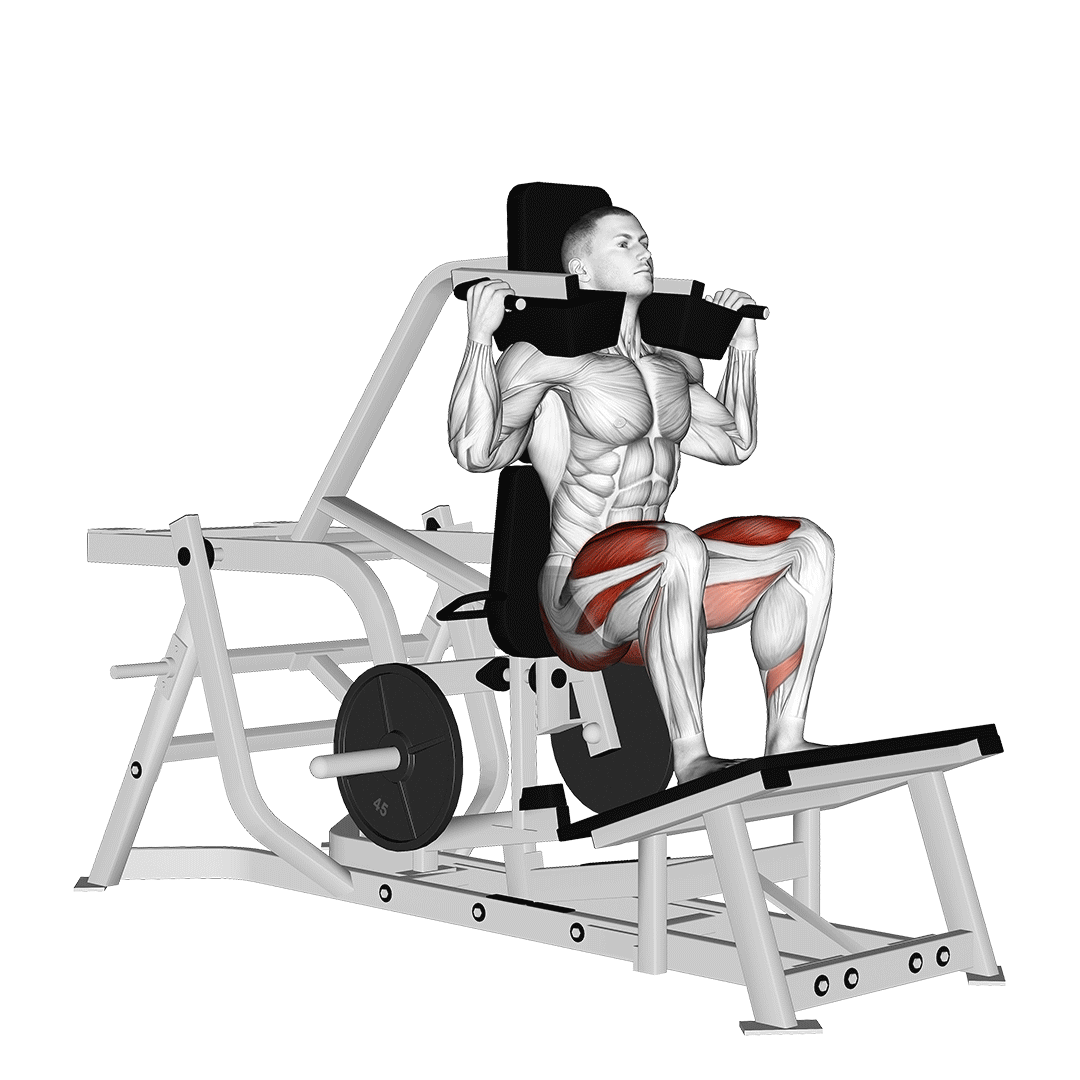
Though it is somewhat more technical than other machine leg exercises, it makes up for it in terms of raw effectiveness and its capacity to replicate natural movement patterns in such a way that other lower body movements cannot.
What is a Hack Squat?
From a more technical viewpoint, the hack squat is a multi-joint machine-based compound exercise of moderate intensity, often performed as an adjunct exercise to free weight movements like the deadlift or back squat - or even as its own primary compound exercise.
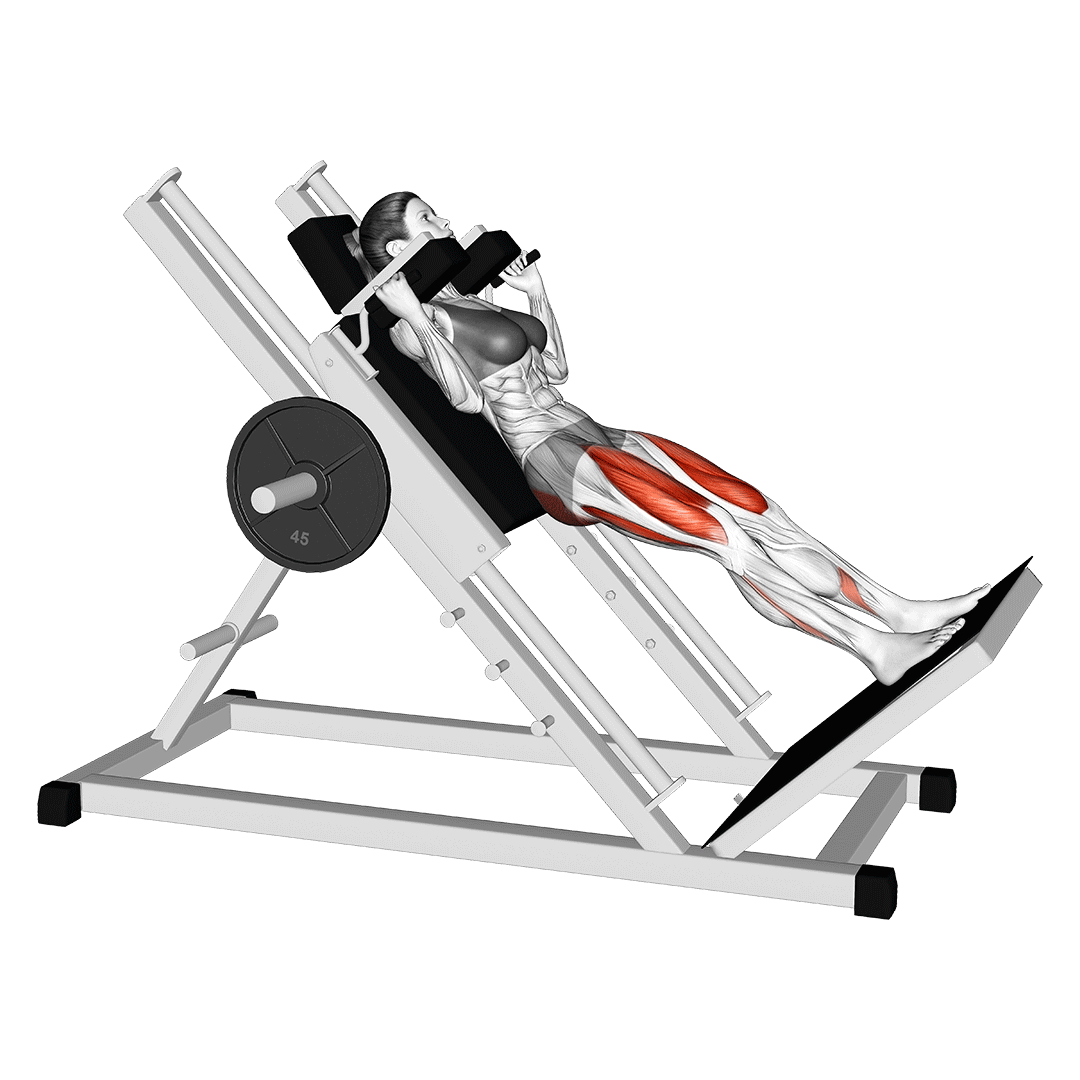
The machine hack squat is particularly valued for its capacity to build the muscles of the quadriceps while placing comparatively low levels of strain on the lower back, as well as the muscles of the core.
Muscles Worked by the V Squat and Hack Squat
Both the V squat and hack squat are lower body compound exercises, meaning that they train multiple muscle groups simultaneously. This is further added to by the fact that they actually train the same muscles in the same ranges of motion.
However, where these two exercises differ is in the focus of said muscular recruitment. While the hack squat is indeed primarily a quads-dominant exercise, the same cannot be said for the V squat.
For lifters torn between which exercise to pick, it is a good idea to assess which muscle group in their lower body is lagging behind the others, and to pick the movement that better focuses on this weaker muscle.
Muscles Focused on by the V Squat
Though the V squat is still a quad-dominant movement, the posterior chain muscles (eg. the glutes and hamstrings) are also brought into play far more than they would in the hack squat, as they are responsible for extending the hips - especially with the deeper “hole” with which the V squat produces.
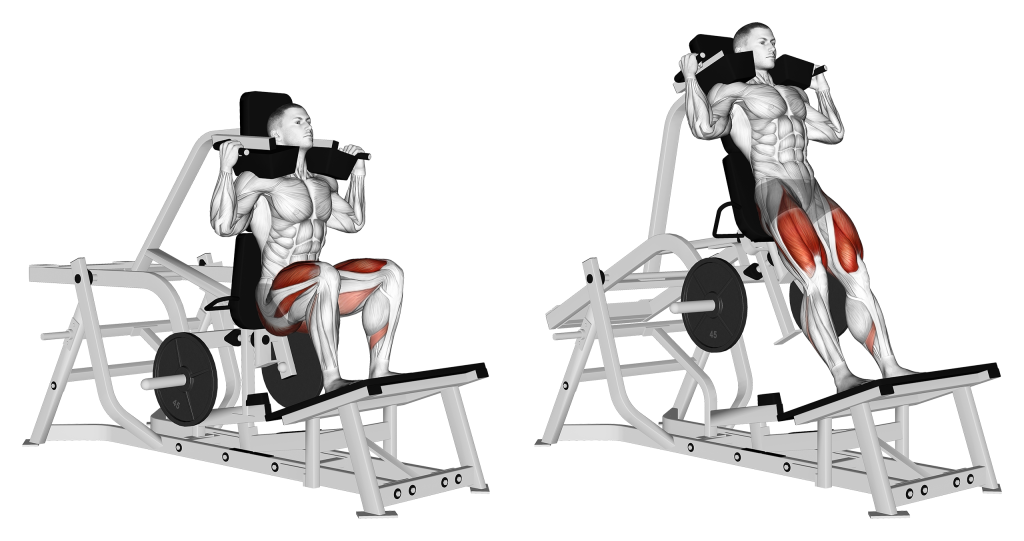
As such, lifters wishing to build lower body explosiveness or a more muscular lower body overall should pick the V squat.
Muscles Focused on by the Hack Squat
The hack squat is used so widely among bodybuilders and powerlifters due to its capacity to grow the quadriceps to a significant degree - a benefit brought on by its greater focus of the muscle itself.
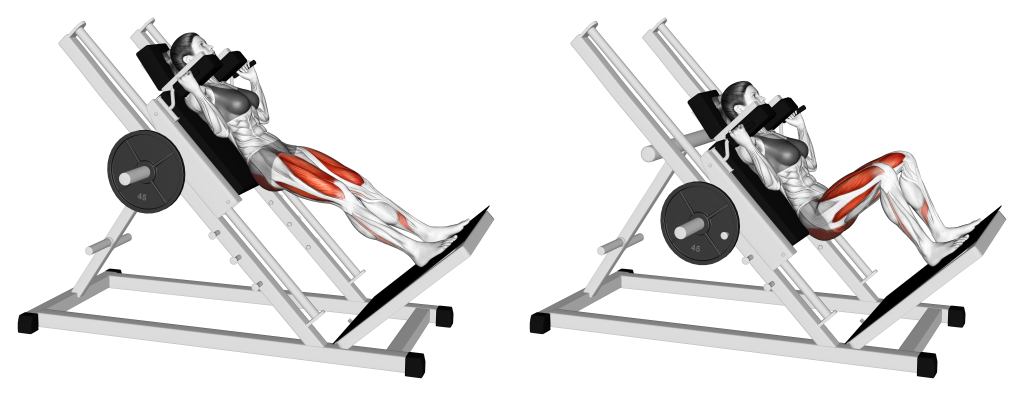
While the hack squat will still recruit other muscles like the hip flexors, glutes and hamstrings, the level of recruitment placed therein is considerably less than it would be with the V squat, meaning that the hack squat is the better choice for lifters wishing to focus on their quads more.
Technique and Stance Differences of the V Squat and Hack Squat
Though the V squat and hack squat are visually similar, they in fact feature several differences in stance and technique that can directly affect the effects of either exercise - altering their individual risks of injury, mobility requirements, what muscles are worked and even the functionality of the movement as a whole.
Foot Angle and Placement
The most significant difference between the V squat and hack squat lie in their stance - particularly that of the feet.
While the traditional hack squat features the feet shoulder-width apart with the toes pointing forward, the V squat will allow the lifter a slightly wider stance with the toes pointing at a more outwards angle.
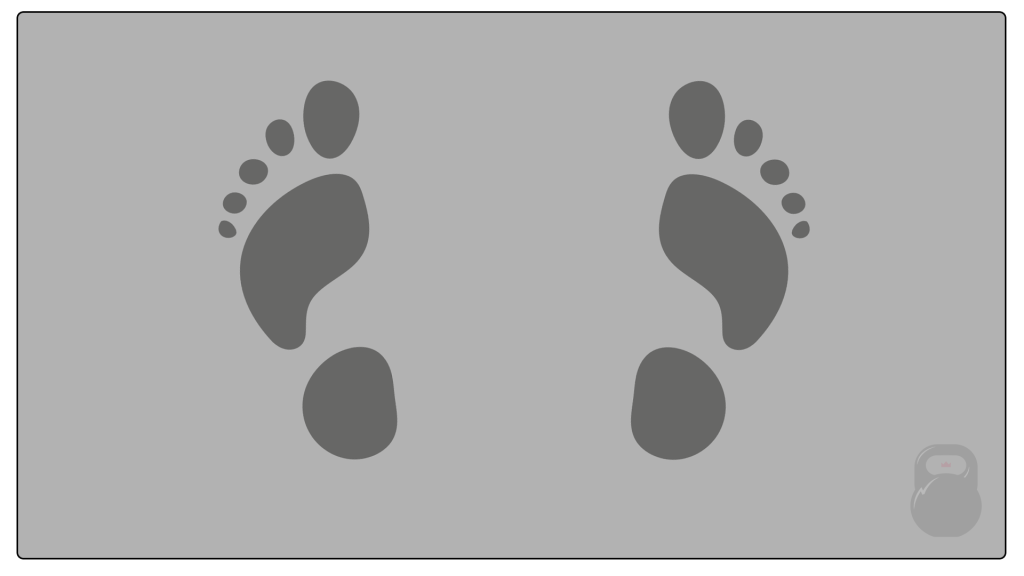
For even greater results, the lifter can place their feet higher on the plate as well.
Even if such a change is seemingly small, it can have wide-reaching effects as the pelvis is allowed to travel a greater distance, which will reduce the need for knee flexion and therefore also reduce recruitment of the quadriceps muscles.
In turn, this means that the more outward-facing and wider foot position of the V squat creates a more posterior chain-focused exercise, whereas the slightly narrower and forward-facing foot position of the hack squat creates a shorter range of motion with a greater focus on the quadriceps and knees.
Knee Travel
As the V squat features a wider stance and greater space with which the pelvis may move, the knees do not need to travel as much as they would with the hack squat, thereby reducing vertical pressure translated through the knees as well as allowing for a longer range of motion.
Conversely, the fact that the hack squat requires more knee movement means that more weight can also be moved as the range of motion is somewhat shorter, allowing for greater loading and volume to occur and making the exercise arguably easier for those with poor gluteal or hip mobility.
Depth and Hip Flexor Utilization
The wider stance and outward-pointing feet of the V squat allow for a greater depth to be achieved and therefore greater utilization of the hip flexors, while the hack squat will have a somewhat higher maximum depth, as it is the knees that move more than the pelvis.
While this is indeed a major difference in technique between the two, it is not an important one - as the entire purpose of the hack squat is to focus on utilization of the quadriceps, of which will be recruited through their full range of motion without the need for the same depth as the V squat.
The sole manner in which this mechanic is important lies in the V squat’s greater utilization of hip mobility and hip flexor strength.
Mobility Requirements of the V Squat and Hack Squat
The V squat and hack squat each require some level of lower body mobility in order to perform correctly - though in different parts of the body.
This can be an important factor for lifters with a history of injuries in either area, and could be a sign that another exercise is a better choice for them.
Hack Squat - Greater Ankle and Knee Mobility
The hack squat features a more forward-facing and narrow stance than the V squat, and as such will place a greater amount of pressure on the ankle and knee joints of the legs; Without sufficient mobility or stability of these areas, it is likely that the lifter’s form will suffer.
However, so long as proper form is being followed and the lifter works on their knee and ankle mobility, the hack squat is perfectly safe and can in fact help reinforce these joints.
V Squat - Greater Pelvis Mobility
Unlike the hack squat, the V squat features far more hip flexion than it does knee extension, meaning that the knees will bend comparatively less as the hips are the primary source of dynamic movement during the exercise.
While this places less stress on the knees and ankles, it will also require that the lifter have a sufficiently mobile set of hip flexors and extensors - as well as stable glute muscles.
Injury Risk of the V Squat and Hack Squat
Just as the V squat and hack squat feature different areas of stress in regards to dynamic movement, so too do they present a different profile of injury risks in regards to where these injuries are likely to occur.
Though both exercises are perfectly safe when performed with correct form, lifters with a history of weakness, injury or instability in the following areas may wish to avoid the corresponding exercise as needed.
Lower Back Strain
Any form of hack squat variation will involve the lower back in some small way. Not as much as a free weight squat, yes, but nonetheless it is still some level of vertically-directed pressure.
In particular however, the V squat is more likely to involve a higher risk of lower back injury due to the greater depth of the exercise, as well as the more involved role of the hips and glutes - of which are directly connected to the lower back at an anatomical level.
Knee Valgus, Strain, and Injury Risk
Because of the closer and forward-facing position of the knees during hack squats, having weak or unstable quadriceps muscles can lead to knee valgus and knee strain occurring - especially if excessive weight is being lifted.
To avoid this, the lifter may perform knee mobility work, additional quadriceps isolation training and can modify their stance so as to prevent the knees from caving inwards.
Carryover of the V Squat and Hack Squat
For powerlifters or other kinds of athletes, deciding on whether to perform the V squat or hack squat is quite simple - in nearly all aspects, the V squat is the better choice.
This particular advantage of the V squat is due to its greater similarity with real-life activities like squatting or jumping, with the form cues, wider stance and general muscular recruitment of the V squat better replicating natural movement patterns than the hack squat does.
Outside of niche accessory work, the hack squat is better replaced by the V squat in sports-specific training programs or for powerlifter squat carryover.
Which Exercise Should You Use?
If going entirely by joint and muscle utilization; hack squats for quadriceps training and knee-dominant movement, and the V squat for a more balanced recruitment pattern that involves the posterior chain alongside a hip-driven movement.
For bodybuilders or individuals seeking greater quadriceps mass, the hack squat is arguably better, even if just for sheer training volume. However, if you are a powerlifter or athlete seeking more functional training, then the V squat may be the better choice.
References
1. Sigmon, Chip C.S.C.S.; Duncan, Daniel E. C.S.C.S.. STRENGTH TRAINING MODALITIES: The hack squat. National Strength and Conditioning Association Journal 12(4):p 28-32, August 1990.
2. Martín-Fuentes I, Oliva-Lozano JM, Muyor JM. Influence of Feet Position and Execution Velocity on Muscle Activation and Kinematic Parameters During the Inclined Leg Press Exercise. Sports Health. 2022;14(3):317-327. doi:10.1177/19417381211016357
